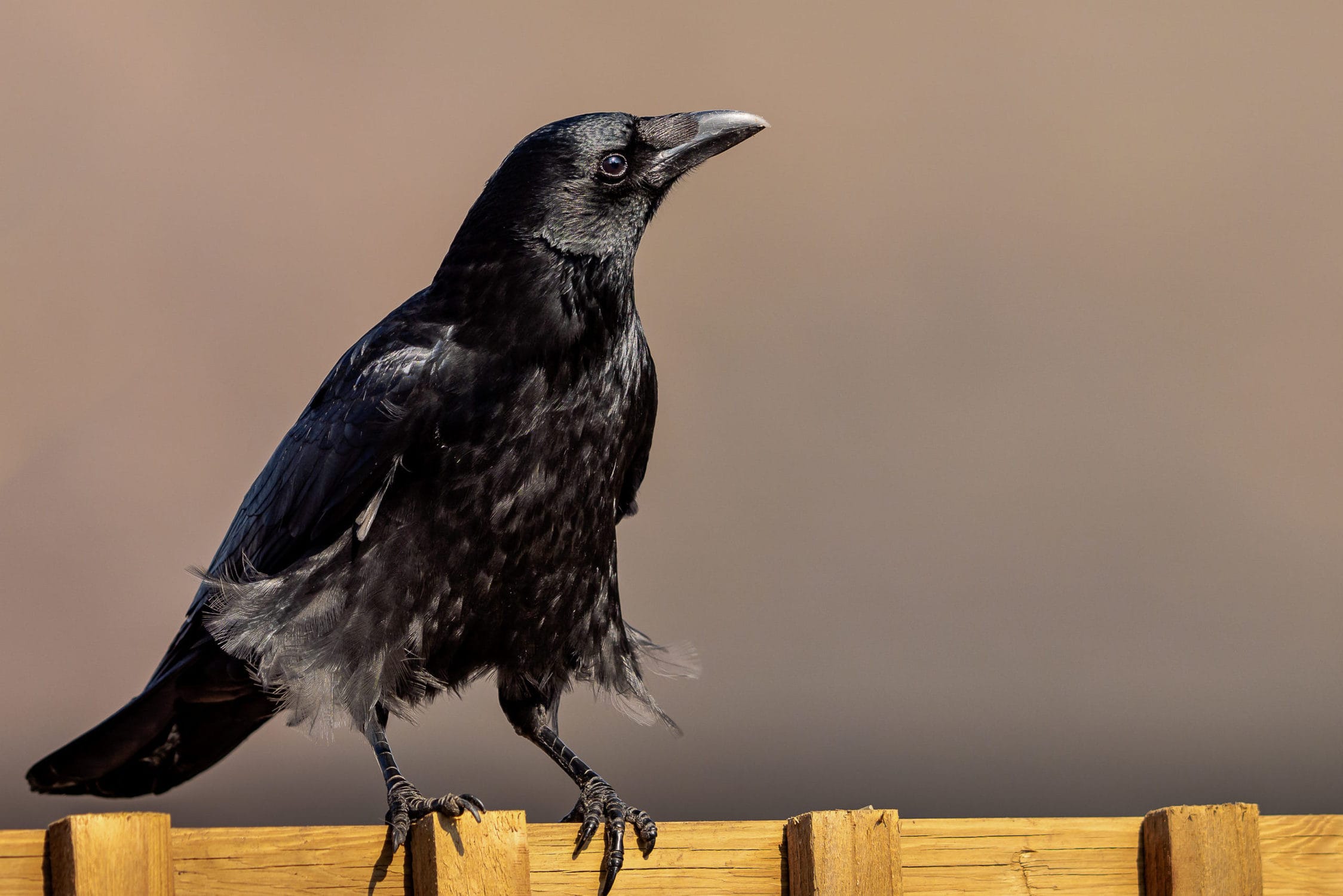You’ve probably heard before that crows are the smartest birds. But did you know they’re also considered to be one of the smartest animals around. They’re even thought to be smarter than some primates! But what exactly makes crows so special? In this article, we’ll look at the hows and whys of crow intelligence, with some help from Jennifer Ackerman’s The Genius of Birds. If you haven’t read it yet, I can’t recommend this book enough. It is a fascinating and thoughtful read.
Intellect and the Animal Kingdom
The Latin name for a human being is Homo sapiens sapiens; Man twice wise. Intellect is a fundamental aspect of the human identity. Place an unarmed man, even a powerful or athletic one, in the path of a charging buffalo or a ravenous leopard and the outcome is clear. Put simply, humans are physically unable to overpower large swathes of the animal kingdom. What we lack in fangs, muscles, wings, or claws, however, we make up for in ingenuity and adaptability. Give that same man a pointy rock and a stick and then the narrative may change.
For so much of human history, this special intellect, this “twice-evident” wisdom, has been the line in the sand between man and beast. Humans speak, humans use tools, humans can solve problems; animals can only react. Although we have begrudgingly admitted to sharing many of our wise distinctions with members of the animal kingdom, the understanding that humans are a cut above the rest has never faded.
The animals that are acknowledged as especially intelligent are typically close relatives of ours. Chimpanzees, orangutans and gorillas; the “great apes” are allowed the honor of almost human-like intelligence.
But what about the animals that aren’t primates? Is our branch of nature’s family tree truly the only one producing such intelligent fruit? No. Of course not. It’s just that the animals outside of our family tend to be distant or rare. Dolphins are considered highly intelligent, for example, but this doesn’t really threaten humanity’s position as the top of the mental heap. Dolphins are stuck in the ocean, after all.
Related Articles:
The Crow Contender
If any creature may present a real threat to the human mind in an intellectual arms race, they must be abundant and adaptable enough to be comfortable dwelling in the vast array of environments that humans inhabit.
With these criteria in mind: superior cognition, adaptability, and proximity, there is one obvious candidate for humanity’s true rival. This is the crow. Crows are unique amongst the ranks of those designated as super smart creatures. They are not close relatives of humanity. As birds, they are not even mammals. In addition, unlike the other intelligent animals, crows are extremely common and often share their habitats with humans.
To examine the intelligence of the crow, we must first examine what intelligence is and how this is reflected in non-human animals. Perhaps because we humans consider ourselves to be “twice wise,” we have a tendency to define intelligence in terms of ourselves. Animals that exhibit human-like behaviors are easier to recognize as having human-like intelligence. For this reason, we tend to think of mammals as more sympathetic, social, and intelligent. This is called “mammal bias.”
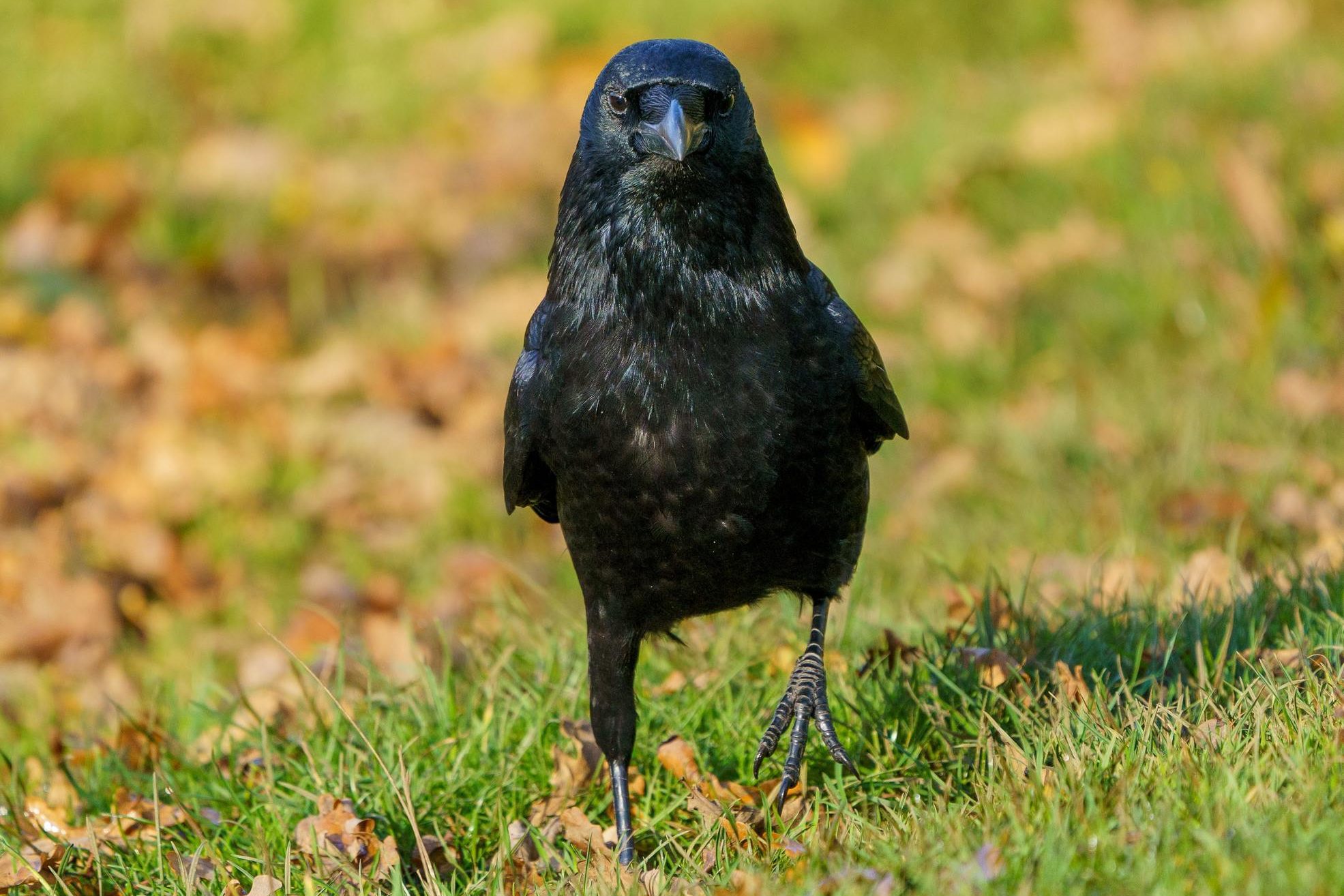
So, how do we then approach the intelligence of a bird? For this, I’d like to turn to “The Genius of Birds.” This book is an excellent source on bird cognition and behaviors. In it, Ackerman describes the way that birds challenge our mammal bias. For one thing, birds are simply very far from humanity in an evolutionary sense. They are much closer to reptiles than they are to mammals.
Our shared evolutionary ancestor is a distant one. We have not shared a common ancestor with crows since well before 150 million years ago, the time in which the dinosaur ancestor of birds lived. The fact that some of the more intelligent birds have arrived at similar intellectual capacities to primates is due to something called “convergent evolution.” Convergent evolution describes how unrelated animals when faced with similar challenges may end up evolving and developing similar solutions.
Crows and the Bird Brain
Convergent evolution is a deceptively simple explanation for a complex, elegant, and utterly baffling phenomenon. Crows, like great apes, are capable of tool use. And not just any tool use, but tool fashioning, tool preparation, and even tool building techniques transmitted through local populations. We will return to tool use later. What is especially striking is that, like human beings and other animals known to utilize tools, crows possess unusually large brains. The old adage of the puny “bird brain” is simply not representative of reality.
Jennifer Ackerman has this to say about the issue: “Our brains weigh about 1,360 grams, or 3 pounds, for an average body weight of 140 pounds… New Caledonian crows are like us, extravagant rule breakers. They possess a brain weighing 7.5 grams in a body that weighs only a little more than half a pound. That’s the same size as the brain of a small monkey, like a marmoset or tamarin, and 50 percent larger than the brain of a bush baby— all animals with roughly the same body size as the crow.”
In addition to their impressive size, the brains of crows, and some of the other birds that can be stated to be exceptionally intelligent, tend to have a remarkably high density of neurons.
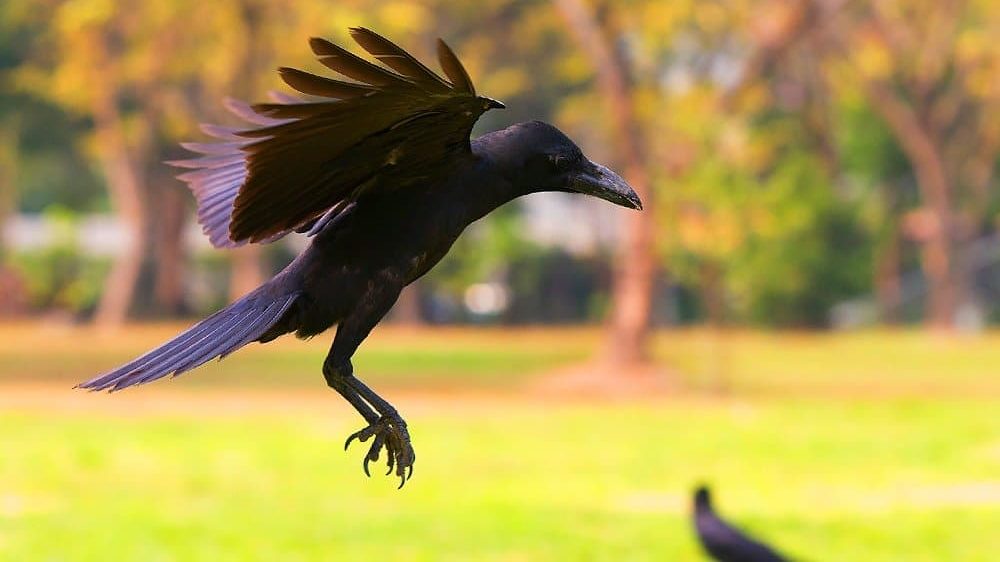
Even more striking is the fact that the majority of these neurons are concentrated in the part of the birds’ brains that closely matches the function of the human cerebral cortex. In the human brain, this structure is responsible for our computational capacity. Birds’ brains are fundamentally different in structure than humans. They do not have a cerebral cortex, however, they do have an analogous brain structure that functions similarly. The percent of the brain’s neurons that are dedicated to this structure in birds is often even higher than in most mammals.
The Remarkable Behaviors of Crows
So, having established that crows are packing mental weaponry on par with that of primates, what does crow intelligence actually look like? To explore that, let’s look at some truly striking examples of genius behaviors in crows.
The type of crow that Ackerman describes as especially brainy in the previous quote is the New Caledonian crow. When it comes to the study of bird intelligence, these natives of the South Pacific island of New Caledonia are indisputable superstars. These avian brainiacs are responsible for many of the most cited examples of corvid intellect. In one instance, a New Caledonian crow named Betty generated a great deal of buzz when, in 2002, she was observed fashioning tools to defeat a test that was put before her.
Inside of a cage, Betty was faced with a problem. Stuck in a tube, far out of her reach, was the meat that she wanted. In a move that, at the time, appeared to be a stroke of genius unmatched by other birds of her species, Betty took the small length of metal wire that had been placed in her cage and bent it against another object. She fashioned the wire into a hook shape and fetched her prize.
At the time, it was thought that Betty was an exceptional bird. This may be true, but it has since been discovered that fashioning tools is a widespread behavior amongst New Caledonian crows. Wild populations of New Caledonian crows have been observed, studied, and even filmed, fashioning hook shaped tool out of leaf stems. They use these tools to retrieve insects from unreachable places.
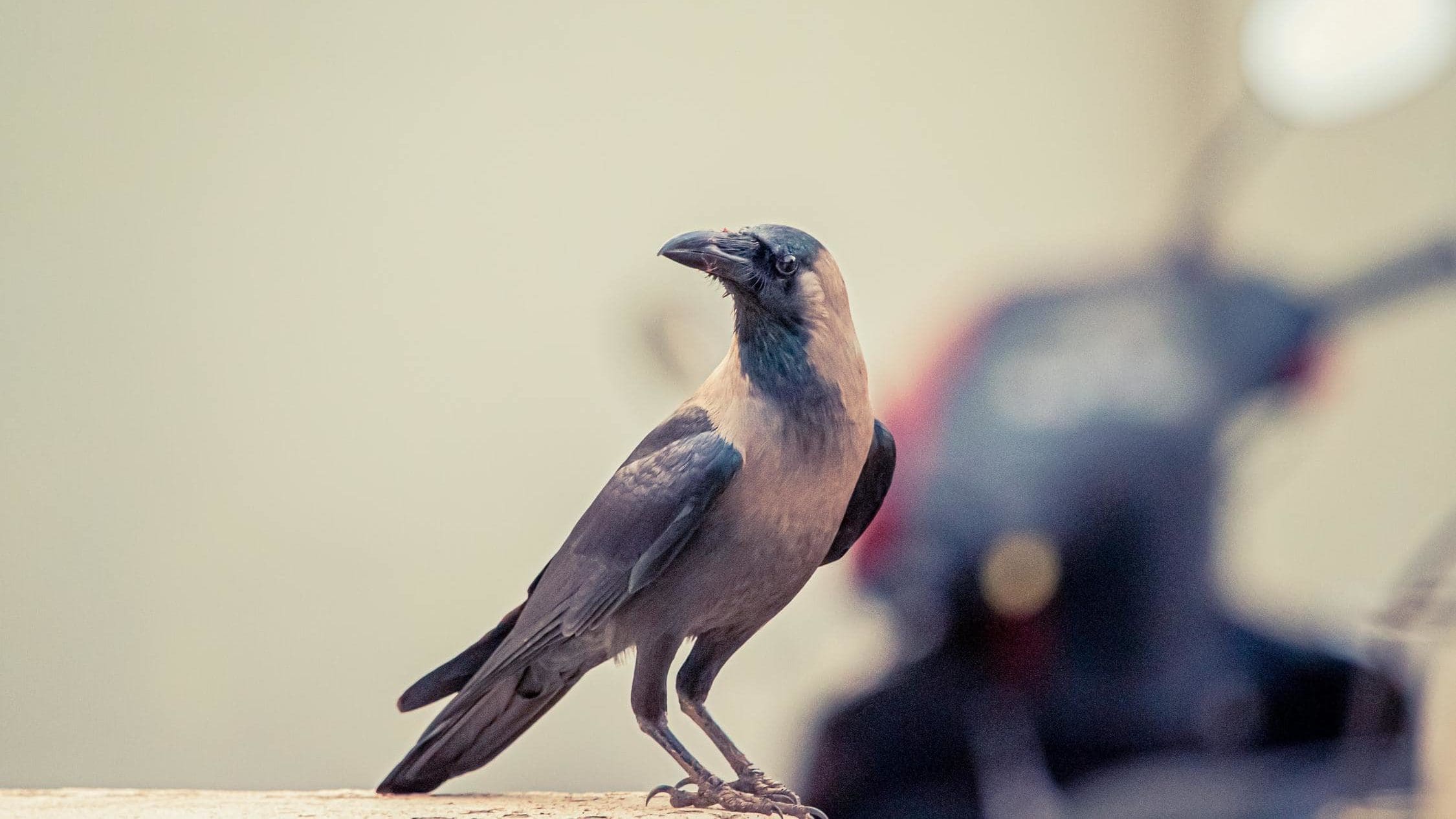
This behavior is not an anomalous once-in-a-while activity for New Caledonian crows. It is also not confined to lab conditions or scenarios involving human intervention. Observation suggests that, not only do wild New Caledonian crows engage in this behavior without being taught by humans, but that they in fact learn their tool fashioning techniques from observing one another.
Young crows fashion sloppy tools that they hone over years of practice. Additionally, regional crow populations seem to have local “specialties” with regards to tool fashioning techniques. This supports the idea that crows are learning, just not from humans. New Caledonian crows learn from one another.
Among individual crows, Betty was once considered a mental prodigy. Since then, a new rival has taken the stage. Meet 007. If Betty’s spontaneous use of a single tool was the spark of a genius brain, then 007’s feat of intelligence is the blazing flame of invention. Through a learning process involving plenty of trial and error, 007 has demonstrated the ability to use problem solving and various tools to complete puzzles of up to eight steps.
What makes 007 and Betty so special, though, may simply be their participation in such studies. Incredible problem solving skills seem to be quite common amongst New Caledonian crows, as suggested by one study which sought to test the ability of New Caledonian crows to construct compound tools.
Amongst animals that are smart enough to use tools, the use of compound tools is reserved for the cream of the crop. It has only been observed in humans, in a few captive great apes, and in New Caledonian crows. This study found that, among eight untrained and wild New Caledonian crows, four were capable of spontaneously crafting compound tools almost immediately. One test subject was even able to combine four pieces into one tool.
The Genius Next Door
At this point you may be thinking that the New Caledonian crow is simply the prodigy of the bird world. You would be right, at least in part. They are considered by some to have intelligence equivalent to a seven year old human child. Though, I think that comparing intelligent animals to human children may be a symptom of our tendency to define intelligence in terms of humanity. Nevertheless, for a bird to be acknowledged as intellectually equivalent to a child nearing the age of reason is no small feat.
But New Caledonian Crows aren’t the only geniuses in the corvid lineup.
In college, I often watched the crows that frequented my campus. These were American crows, an incredibly common sight across the United States. I would occasionally bring them shelled peanuts to eat, if only so that I could watch them a bit closer.
As I tossed peanuts into the forested patch of campus where the crows were most comfortable, I observed them forming these odd little teams of two. These pairs would consist of one crow which watched me from the trees. When I would throw a nut, this crow would hop to the branch directly above the offering and caw loudly. Its teammate would then swoop in, quick as can be, and snap up the treat.
I watched this dance play out for hours over the course of my time on campus. Each time, I noticed, after the fetching crow had had about three peanuts, they would switch. To my admittedly unscientific eye, it seemed like the two birds were engaging in a mutually beneficial cooperative behavior.
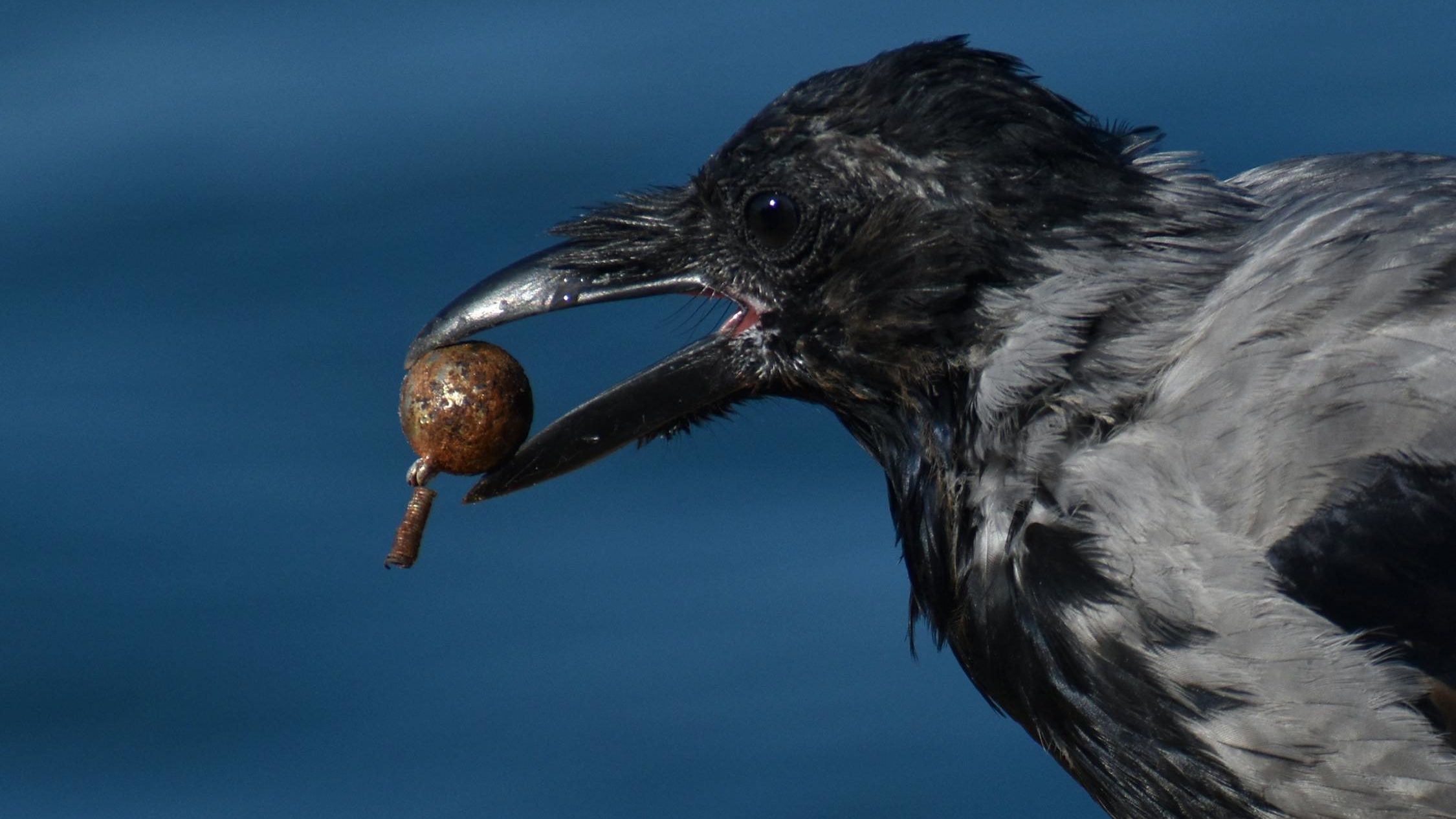
I’ve never seen this specific behavior described elsewhere, but ask any avid birdwatcher about crows and a pattern emerges. From leaving shiny presents for humans that feed them, to cracking nuts on busy streets by timing traffic and allowing cars to crush them, anecdotal evidence for genius behaviors among American crows are abundant. American crows have even been observed partaking in “funerals,” gathering around their dead and seemingly investigating the scene for potential life-threatening dangers.
In one very famous study, it was found that American crows can recognize human faces. In this study, crows that had been scared by a researcher in a mask were alarmed whenever this mask was presented to them. In fact, even without being attacked by the masked researcher, their offspring began to exhibit wariness of the threatening face.
This study has been pointed to often as evidence that crows can transmit information and engage in social learning. Their long life spans, social behaviors, and tendency to invest in child rearing support the idea that, like humans, crows are natural social learners.
Conclusion
Crows, despite their reptilian “otherness,” may provide us with vital clues about the intellectual and social development of human beings. Their convergent evolution suggests that, perhaps, the marvel of human intelligence isn’t a monolithic contribution of the miraculous human brain. Instead, human intelligence may be an ever-growing answer to a set of environmental problems. The same set of problems that our extremely distant avian cousins have grappled with.
Perhaps, the genius of crows and of humankind lies not in the sticks and tools we build, but those ever-so-frustrating treasures that hide in hard to reach spaces. After all, they say that necessity is the mother of invention. And what greater act of genius, of pure brilliant problem-solving, can there be than spontaneous creation.
More Articles to Check Out:
